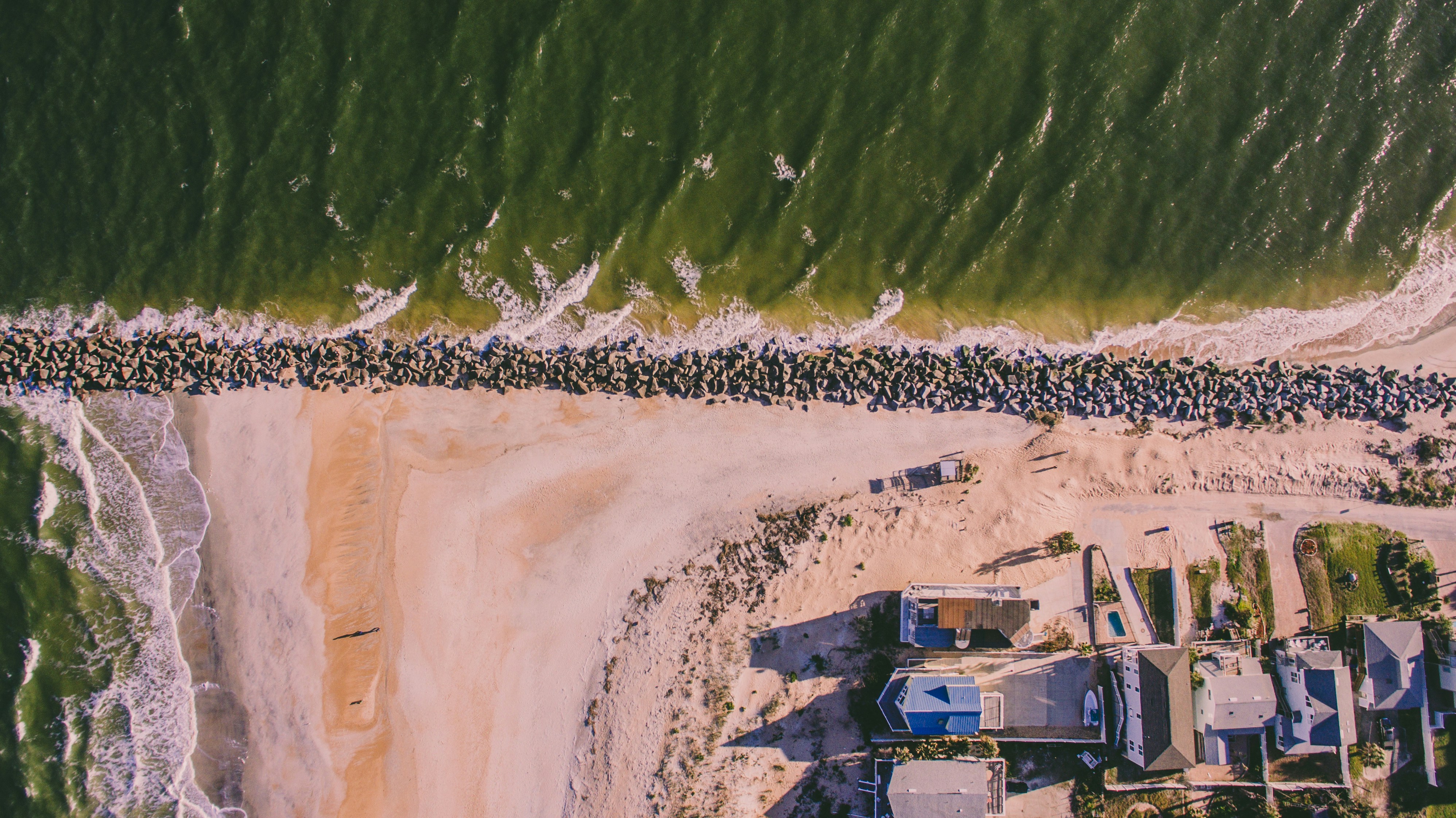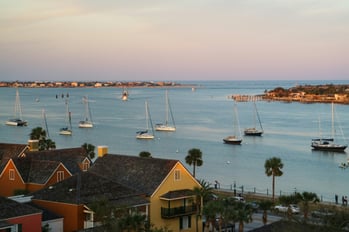Roofing in Tough Climates: Coastal Edition
April , 2024 | 5 min. read

Living by the ocean comes with its perks: salty breezes, stunning views, and that unmistakable sound of waves crashing against the shore. But let's talk about the elephant in the room—the weather. Almost everyone has a memory of being at the beach one minute, only to run back to their hotel quickly after because of a storm rolling in. Coastal climates can be tough on roofs, with their relentless assault of wind, rain, and salty air. If you call a coastal area home, you know firsthand the unique challenges your roof faces!
At RoofCrafters, we want to be your trusted guide in navigating the treacherous waters of coastal roofing. With nearly 30 years of experience under our belts, we've weathered countless storms and helped homeowners emerge stronger each time. Our expertise isn't just about slapping shingles on a roof—it's about crafting resilient solutions to help you thrive in your coastal environment.
In this article, we'll dive deep into the world of coastal roofing, exploring the specific challenges homeowners face and the strategies you can implement with your roofer to overcome them. So, buckle up, grab a cup of coffee, and let's take you through the details of how to ensure your roof stands strong against whatever Mother Nature throws its way.
Why Are Coastal Regions Tricky for Roofs?
Living in a coastal region comes with its fair share of perks, doesn't? Hello, salty air and cool breezes. However, it also brings unique challenges, especially for your home's roofing system. Coastal areas are notorious for their harsh weather conditions, including high winds, heavy rain, and intense sunlight. These elements can take a toll on roofs over time, leading to premature deterioration and damage.

One of the primary culprits behind the wear and tear on coastal roofs is saltwater exposure. The salty air near the coast contains corrosive salts that can accelerate the degradation of roofing materials, particularly metal components like flashing, gutters, and fasteners. Over time, this exposure can lead to rust, corrosion, and weakening of the roof structure, compromising its integrity and performance.
Besides saltwater exposure, coastal regions are also prone to extreme weather events such as hurricanes, tropical storms, and nor'easters. These powerful storms can unleash destructive winds, heavy rainfall, and flying debris, posing significant risks to roofing systems. High winds can lift and dislodge shingles, tear off roof components, and even cause structural damage. Heavy rain can lead to water intrusion and leaks, while flying debris can impact and puncture roofs, causing extensive damage.
The combination of saltwater exposure, high winds, and heavy rainfall also creates an ideal environment for the growth of algae, moss, and mildew on roofs. These murky organisms not only detract from the aesthetic appeal of the home but can also compromise the resilience of the roofing materials. As they accumulate and spread, they can trap moisture, accelerate the deterioration of shingles, and create conditions conducive to rot and decay. As a result, homeowners in coastal regions must take proactive measures to protect their roofs and mitigate the effects of these environmental factors.
How to Keep Your Coastal Roof Healthy & Happy
Maintaining a healthy and resilient roof in a coastal environment requires proactive care and attention to detail. Here are some essential steps homeowners can take to keep their coastal roofs in top condition:
Regular Inspections: Schedule regular inspections of your roof to identify any signs of damage or deterioration. Look for missing or damaged shingles, rusted flashing, loose fasteners, and signs of water intrusion such as stains on the ceiling or walls. Addressing issues early can prevent them from escalating into more significant problems.
Cleaning and Maintenance: Keep your roof clean and free of debris to prevent the buildup of algae, moss, and debris that can trap moisture and accelerate deterioration. Trim overhanging branches to prevent them from rubbing against the roof surface and causing damage. Clean gutters and downspouts regularly to ensure proper drainage and prevent water from pooling on the roof.
Sealing and Waterproofing: Apply sealants and waterproof coatings to vulnerable areas of the roof, such as flashing, seams, and penetrations, to protect them from water intrusion and corrosion. Consider installing a high-quality waterproof membrane underlayment to provide an additional layer of protection against moisture infiltration.

Upgrading Materials: Choose roofing materials that are specifically designed to withstand the challenges of coastal environments, such as impact-resistant shingles, corrosion-resistant metal roofing, and durable synthetic materials. Invest in high-quality roofing products with extended warranties to ensure long-term performance and peace of mind.
Ventilation and Air Circulation: Ensure proper ventilation and air circulation in the attic space to prevent moisture buildup and heat retention, which can lead to mold growth, wood rot, and premature deterioration of roofing materials. Install ridge vents, soffit vents, and attic fans to promote airflow and regulate temperature and humidity levels.
Professional Maintenance: Don't hesitate to seek professional assistance from reputable roofing contractors like RoofCrafters for routine maintenance, repairs, and inspections. Experienced professionals can identify and address potential issues before they escalate, ensuring the long-term health and integrity of your coastal roof.
By following these proactive maintenance strategies and working with experienced roofing professionals, homeowners can keep their coastal roofs healthy and happy for years to come, even in the face of challenging environmental conditions!
Is Your Coastal Roof Living Its Best Life?
If not, let's make it happen! Maintaining a coastal roof requires proactive care to protect it from the unique challenges given by coastal environments. Regular inspections, cleaning, and maintenance are essential to identify and address issues early, preventing them from escalating into more significant problems. Upgrading to high-quality materials designed to withstand coastal conditions and ensuring proper ventilation and airflow can also significantly extend the lifespan of your roof.
At RoofCrafters, we understand the importance of maintaining a healthy and resilient roof in coastal regions. With our commitment to quality, we can help you navigate the challenges of coastal roofing and ensure your roof remains in top condition for years to come. Contact us today to schedule a professional inspection and learn more about how we can help protect your coastal roof investment.
Remember, your roof is your home's first line of defense against the elements, and it's essential to invest in its care and maintenance. With us by your side, you can enjoy peace of mind knowing that your coastal roof is in expert hands.
My name is Anthony, and I am the lead estimator of RoofCrafters’ Georgia/South Carolina division. The roof is the most important part of a structure, and people count on that to protect themselves and their families. That is one of the many reasons why I love my job and enjoy coming to work every day. The continuous training, honesty, and providing the customer with the Roofcrafters experience is what makes me the best in the business.




